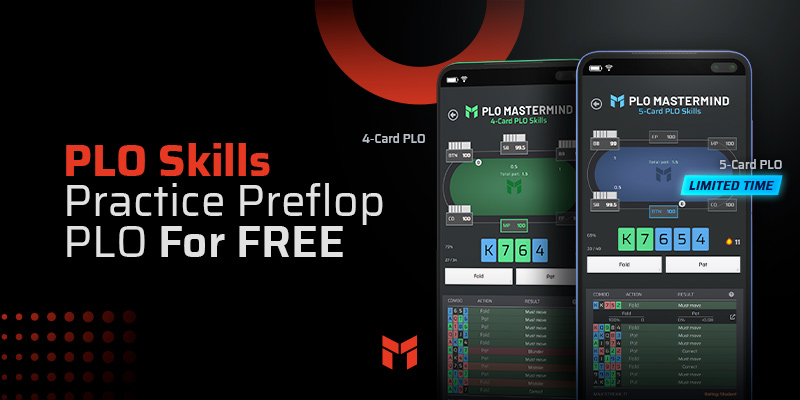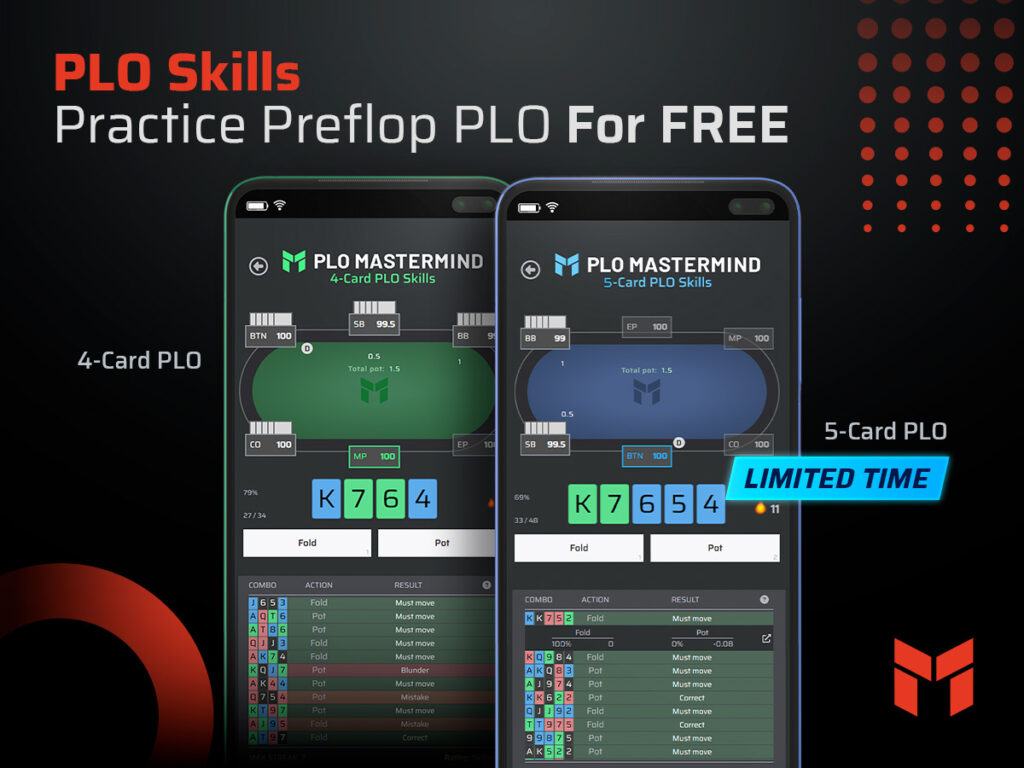Understanding when to slowplay the nuts is a crucial skill in poker. In Pot Limit Omaha, holding the nuts may often feel like you’re on the brink of being outdrawn, compelling you to constantly protect your hand and always bet the nuts, frequently opting for pot-sized bets.
However, such a strategy can lead to a significant loss in expected value (EV) due to a predictable betting pattern and an unbalanced range. In this comprehensive guide, we will explore the strategic art of slow playing the nuts in PLO.
By understanding when to slow play, you can maximize value from your opponents and evolve into a formidable, unpredictable player. We’ll dissect three key scenarios where slow playing the nuts is not just a choice, but a necessity for maximizing your win rate.
1. Slow Playing with Overkill
The concept of slowplaying in these spots is familiar to most players. Identifying opportunities for slowplaying is part of the game’s strategy. However, the challenge often arises when you’re the last to act. It’s tempting to make a value or protection bet, but it’s crucial to maintain a balanced approach.
In position, we generally face a 50/50 decision between continuation-betting (c-betting) and checking. To protect our check-back range, including strong hands is essential. For instance, when you hit top set on an A-high two-tone board, it’s a strategic necessity to check back certain hands that make it unlikely for your opponent to continue.
By slowplaying nutted hands you make yourself less exploitable to turn and river probes, especially from aggressive players. If we never check back the nuts, our opponents will have profitable bluffs on many runouts.
EXPLOIT: A significant aspect of the EV in checking back lies in the possibility that your opponent might bluff on blank turns and rivers. If you’re facing a passive opponent who is unlikely to make aggressive plays on future streets, it may be more beneficial to bet for value immediately and get calls from marginal hands that would otherwise keep checking.
2. Slow Playing with a Range Disadvantage
A range disadvantage is where you are a polarity and equity underdog. Think about a 3-bet pot on a 965 rainbow board where our range does not interact very well with the board.
You are going to end up slowplaying, or playing the flop much more passively so that you can make up for your range disadvantage on the next street. This is a tactic to strengthen your range moving forward in the hand and allows you to handle more pressure on turns and rivers that are favorable for your opponents range.
In this example all of our sets and straights are only calling, never raising. We just call these hands in order to remain competitive on turns and rivers. If we were to raise these hands we become extremely vulnerable with our calling range on many runouts, and our opponent can barrel us off our hand easily.
EXPLOIT: If your opponent’s leading range is heavily skewed towards value then you can do more fast playing with these nutted hands and raise.
3. Slow Playing after Being the Aggressor on the Prior Street
After we c-bet the flop, especially with a draw, we are actually supposed to do a decent amount of slowplaying when we turn the nuts. For example when we bet the nut flush draw on the flop, and then turn the nuts and our opponent checks to us.
We see that we are actually supposed to check back 70% of our range, given that the nuts did change since we bet the flop. If our overall range is checking this much, we need to make sure we include the top of that range in our check backs.
Also, if we bet all of our nut flushes on the turn, our checking range doesn’t have any nut flushes anymore. That means if we check back and our opponent bets into us on the river, he knows that he will never get raised, or that he will get called less frequently as our best hands are out of our range.
If you do not protect your check back range as you move up in stakes, even with the nuts, you will get punished by solid aggressive players.
Conclusion
While the instinct is often to bet for value, recognizing the right moments to slowplay can significantly enhance your strategic depth. Mastering slowplaying is not just about playing a single hand optimally; it’s about crafting a long-term strategy that makes you unpredictable and difficult to read.
It’s essential to remember that this doesn’t mean you should always check back the nuts. Most situations in PLO still warrant a bet for maximum value. However, knowing when to deviate from this norm by slowplaying can give you a substantial edge.



